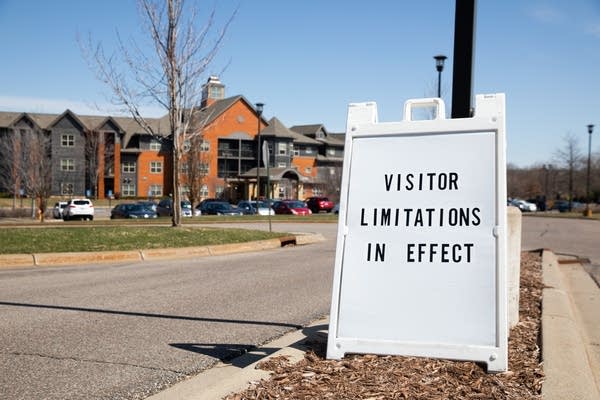'Deadly phase': Minnesota's long-term care facilities fight to control coronavirus spread

Go Deeper.
Create an account or log in to save stories.
Like this?
Thanks for liking this story! We have added it to a list of your favorite stories.
As in other states, the COVID-19 deaths among older people in Minnesota happened where they were most vulnerable: in group settings and cared for by people who came and went daily.
In Winona County, eight deaths have been tied to one nursing home.
Three people have died of COVID-19 and 17 residents have tested positive at St. Ann’s in Duluth.
Meridian Manor in Wayzata moved 46 residents out not only because so many were sick: Staff had become ill with COVID-19 and couldn’t do their jobs.
Turn Up Your Support
MPR News helps you turn down the noise and build shared understanding. Turn up your support for this public resource and keep trusted journalism accessible to all.
Nursing homes and assisted living facilities had hoped to keep the coronavirus mostly outside of their doors. But despite their efforts, COVID-19 cases have spread to more than 90 congregate care facilities. More than 70 percent of Minnesota's fatalities are traced to long-term care homes. The trend is leading to facilities springing up just to deal with confirmed COVID-19 cases.
“We’re seeing the infection enter a more deadly phase for our vulnerable populations,” said Gayle Kvenvold, president and CEO of LeadingAge Minnesota, an association that represents long-term care organizations in the state.
“In the absence of wide-scale testing, the number of confirmed cases in our communities are growing and some of our members are battling pervasive outbreaks,” she said.
Kris Ehresmann, infectious disease director at the Minnesota Department of Health, said the coronavirus has taken a deadly toll, with 113 of the 160 deaths associated with long-term care.
Since the early days of the pandemic in Minnesota, nursing homes have cut off outside visitors, deployed social distancing guidelines within homes for meal time and stopped most group activities. Staff are screened for fever and respiratory symptoms. But now Ehresmann says it’s become clear that people can spread the virus without showing symptoms.
“It’s entirely possible that you can have a staff person or a health care worker who is working in good faith and may potentially have exposed residents,” Ehresmann said.

“Our plea has been unless we have testing that’s universal across the board, so we can test everyone who is coming through our doors, there’s no guarantee that we’re not going to be admitting someone [with COVID-19] into our building,” said Patti Cullen, president and CEO of Care Providers of Minnesota, an association for nursing homes and assisted living facilities.
Kvenvold says without more testing, nursing homes have trouble maintaining safe staff levels.
“A number of those who’ve been exposed are workers. And because we don’t have enough tests to test those who don’t have symptoms, those workers are quarantined so they’re basically having to be on the sidelines for two weeks when they could be there in the setting providing care for seniors,” Kvenvold said.
To try to get more workers, the state has waived certain regulations to allow on-the-job training and is trying to find workers and additional protective equipment for those long-term care facilities in dire need.
Several of the state’s largest operators have outfitted separate buildings or wings of existing facilities strictly for confirmed coronavirus cases. The State Emergency Operations Center has approved four COVID-19 elder care sites. Seven more are awaiting approval.
Cullen said even with shortages and quarantined co-workers, employees in nursing homes and assisted living facilities continue performing important jobs.
“They’re working in very close quarters with individuals that could also cause them to be sick and bring it home to their family members.”


